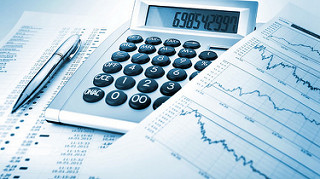When the Liquidity Bubble Bursts, What will be Left?
Let’s face it; debt has always been a huge drag on the global economy, despite the fact that it plays a pivotal role in economic growth throughout the developed world.

However, once the so-called debt-to-GDP ratio begins to creep beyond the 80% mark, economies start to grow in a dangerous and often unsustainable manner. This trend is evident across the western world at present, with nations such as Italy, the UK and even the U.S. currently basing their prosperity on disproportionate mountains of debt.
In this post, we’ll explore this in further detail, while asking what will happen when this liquidity bubble eventually bursts.
Debt-to-GDP and the Liquidity Bubble – A Ticking Timebomb
Even the headline figures don’t read well for some of the world’s leading economies, with the U.S. offering a relevant case in point.
After all, U.S. government debt is now a whopping 106% of GDP, while this figures rises to more than 120% if you factor in state and local debt. At the same time, the UK has the 21st highest debt-to-GDP ratio in the world, while the current figure of 89.2% expected to rise considerably post-Brexit.
In Europe, perennially-stricken Greece maintains an inflated debt-to-GDP ratio of 181.3%, while Italy’s remains uncomfortably high at 132.6%.
These figures are worrying enough by themselves, but they’re also underpinning a liquidity bubble that is liable to burst at any time. This occurs when asset prices are based on implausible or unsustainable views about the economic future, while bubbles are often characterised by rising levels of national debt and a sudden crash in real value.
With interest rates being maintained well below real world inflation rates through the western world and securities being traded at a far higher price than their intrinsic value, there’s no doubt that nations like the U.S. are becoming trapped in a liquidity bubble. In fact, it seems only a matter of time before this bursts, leaving the world on the brink of another global recession.
What Can we Expect if the Bubble Bursts?
If you cast your mind back to 2006, you’ll remember a booming global economy that was heavily reliant and borrowing and inflated debt-to-GDP ratios.
The economy subsequently came crashing to a halt just two years later, when the collapse of the subprime mortgage market in the States pricked the liquidity bubble and served as a catalyst for the global recession.
Make no mistake; we’re now witnessing similar economic portents, while the fact that off-budget deficits in the States have averaged around $360 billion for the last five years hints at the magnitude of the liquidity bubble that has been building.
With consumer borrowing also on the rise and lenders like this also experiencing sustained demand for their products, households will also be adversely affected if the bubble crashes and many could be left with secured debts (i.e. mortgages) that they’re simply unable to repay.
As a result, a burst liquidity bubble would undoubtedly usher in the second global recession in a little over a decade, while geopolitical issues such as Brexit may arguably compound the effects and restrict any potential recovery.
